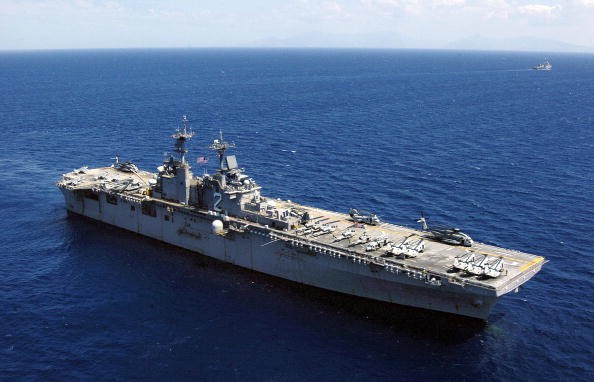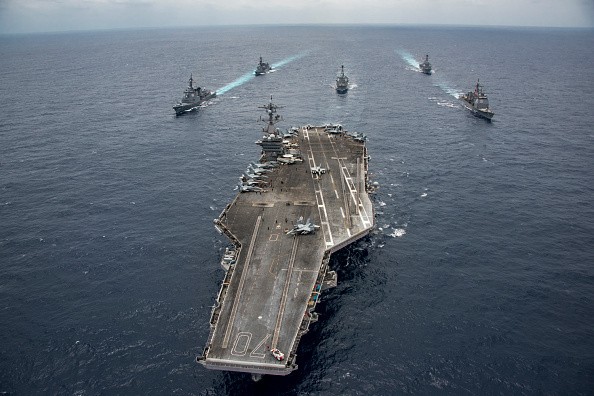The USS Essex, a Wasp-class landing helicopter Dock (LHD) ship used by the U.S. Navy, previously received a giant 3D printer.

This massive equipment weighs around 15,000 pounds (7.5 tons). Because of its heavy weight, the U.S. Navy needed to use a crane to hoist the 3D printer onto the massive vessel, which is located in Pearl Harbor, Hawaii.
Since it is a 3D printer, it doesn't use actual ink. Instead, it relies on hot liquid metal to function. Now, if you wonder how this giant printer will benefit America's sea-based troops, here's how the tech works.
USS Essex Navy Ship's Giant 3D Printer Uses Hot Liquid Metal!
According to PopSci's latest report, the giant 3D printer called ElemX was created by Xerox. It consumes aluminum wire as the raw material.

Once these wires are melted, the hot liquid metal will be used to print various components that the U.S. Navy may need while in the sea.
"The wire gets fed into the heated print head. The print head gets to 850 Celsius [1,564 Fahrenheit], which essentially melts the wire, so you get this liquid pool of metal," said Xerox Elem Additive's Head Tali Rosman.
He added that they activate the 3D printer's pulses on its head. After that, the metal will be ejected drop by drop, allowing the equipment to build the parts needed by the Navy troops.
AIMD (Aircraft Intermediate Maintenance Department) Essex Officer Lt. Cmdr. Nicolas Batista explained, via the United States Pacific Fleet's post, that the 3D printer is a big deal since it will improve the U.S. Navy's overall defense preparedness.
USS Essex 3D Printer's Issues
Since 3D printers are designed to work on stable facilities, Rosman shared some issues that the equipment may face once it is fully operational on the sea.
One of these is the Navy ship's vibrations. He explained that these shakings might affect the process of the 3D printer.
On the other hand, the saltwater reaching the vessel's platform may also be a problem.
Rosman explained that even though the large 3D printer is contained inside a massive metal box, salty air or saltwater may pose some problems since the U.S. Navy hasn't handled this kind of tech aboard.
Meanwhile, Iran's drones were sent to Ukraine, creating confusion if the country supported Russia.
Previously, the U.S. Military's high-altitude hot air balloons are expected to prevent hypersonic missile attacks.
For more news updates about the U.S. Navy and its upcoming defense techs, always keep your tabs open here at TechTimes.
Related Article : U.S. Air Force Receives First 'Fighter-Mounted Laser Weapon' That Can Combat Hypersonic Missiles!
This article is owned by TechTimes
Written by: Griffin Davis
ⓒ 2025 TECHTIMES.com All rights reserved. Do not reproduce without permission.




